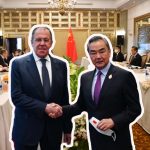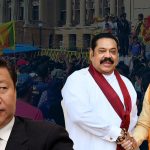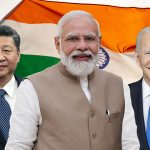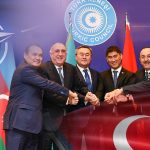Xi attach his political fortunes to ‘Zero COVID’ despite costs


The first was to see “Optics Valley,” a developing technology hub that represents China’s aspirations to foster domestic innovation and increase self-reliance. As with many of his visits to factories and incubators for vital technology sectors across China, Xi posed for pictures with important employees at the factories and discussed the value of Chinese invention.
In addition, Xi’s visit, which came before his travel to Hong Kong to commemorate the 25th anniversary of the city’s handover in 1997, was intended to establish himself as Wuhan’s and China’s political and public health savior. Xi presented himself as the champion of China’s technical growth in a speech he gave in the city, and he touted his “Zero COVID” strategy as the solution to the pandemic. As he works to solidify his tight hold over the Communist Party, Xi could plausibly claim a broad mandate from the populace by waving these two potent symbols.
Related Posts
While Xi presents himself as a hero, his policies have placed the political well-being of the CCP and himself above the health of the general populace for the entire two and a half years of the Coronavirus outbreak. This has occasionally come at the expense of Chinese residents’ access to fundamental services.
The purpose of Xi’s address, which had the theme “Firmly grasp the lifeline of technology, and unceasingly support safe and independent economic development,” was to convey to party members his intention to stick with his domestic policy goals. Xi claimed that “our approach to the epidemic is the most pragmatic and has produced the best outcomes.”
In addition, he said, “under the fundamental leadership of our Chinese Communist Party, we must intensify the execution of dynamic Zero-COVID policy until the very last victory has been accomplished.” He acknowledged the significance of giving care for children and the elderly even more priority. Beijing’s elimination approach, which entails mass testing and community confinement, was largely affirmed by Xi’s statements.
Any uncertainty about whether the Zero COVID strategy would be relaxed was effectively dispelled by the speech in Wuhan. Contrarily, it seems that Xi has staked his political future on the hard stance, in spite of its flaws and growing unpopularity. But if Zero COVID and the associated policies make up a significant portion of Xi’s plan for China, it is because they meet a need for both him and the party.
The numerous visual elements that go into enforcing the Zero COVID strategy help to create this impact. The CCP’s public relations operations, especially large-scale ones, have an aesthetic flair to their execution that comes with fundamentally political aims.
In this regard, the ubiquitous PCR-test and quarantine enforcement teams, sometimes known as the “big white” army because to their baggy white hazmat suits, might be considered as tangible proof of the effectiveness of the government’s reaction. Similar to how surface disinfectants have proliferated in other lockdown cities and provinces like Shanghai, there is now a public health equivalent of “security theater” in place.
However, alternative, harsher framings of the government’s pandemic reaction based on the actual experiences of China’s populace under the harsh measures of Zero COVID contend for the public’s attention. Delivery drivers routinely receive more financial support from mutual aid networks than from government programs, and there are still care gaps among vulnerable populations and inadequate living circumstances for important workers. Even while any record or criticism of these service gaps are swiftly prohibited, accessibility to high-quality hospitals for medical crises is far from assured.
There have been initiatives to draw attention to these flaws and call for improved public services. For instance, the popular movie “Voices of April” featured stock footage over voice clips of people complaining about the widespread hunger and shortages of food and medicine during the first few weeks of Shanghai’s rigorous lockdown. However, it was soon removed from social media sites, as is the case with complaints about the lack of hospital beds and the treatment of patients with disabilities.
Therefore, as time passes, “positive energy” propaganda that highlights the valor of volunteers and government officials will obliterate any critical discussion of domestic shortages. Being “right” in his choice to undertake stringent Zero COVID policies is not sufficient for Xi.
The visual evidence must resoundingly and unequivocally support that. These ads, together with Xi’s address in Wuhan, aim to support the thesis that Zero COVID has been a complete success. Although there are fewer deaths from the coronavirus in China than in the United States, party officials are nevertheless adamant that their strategy is sound. Their contempt for anyone who disagree with their views was only reinforced by Xi’s address.












